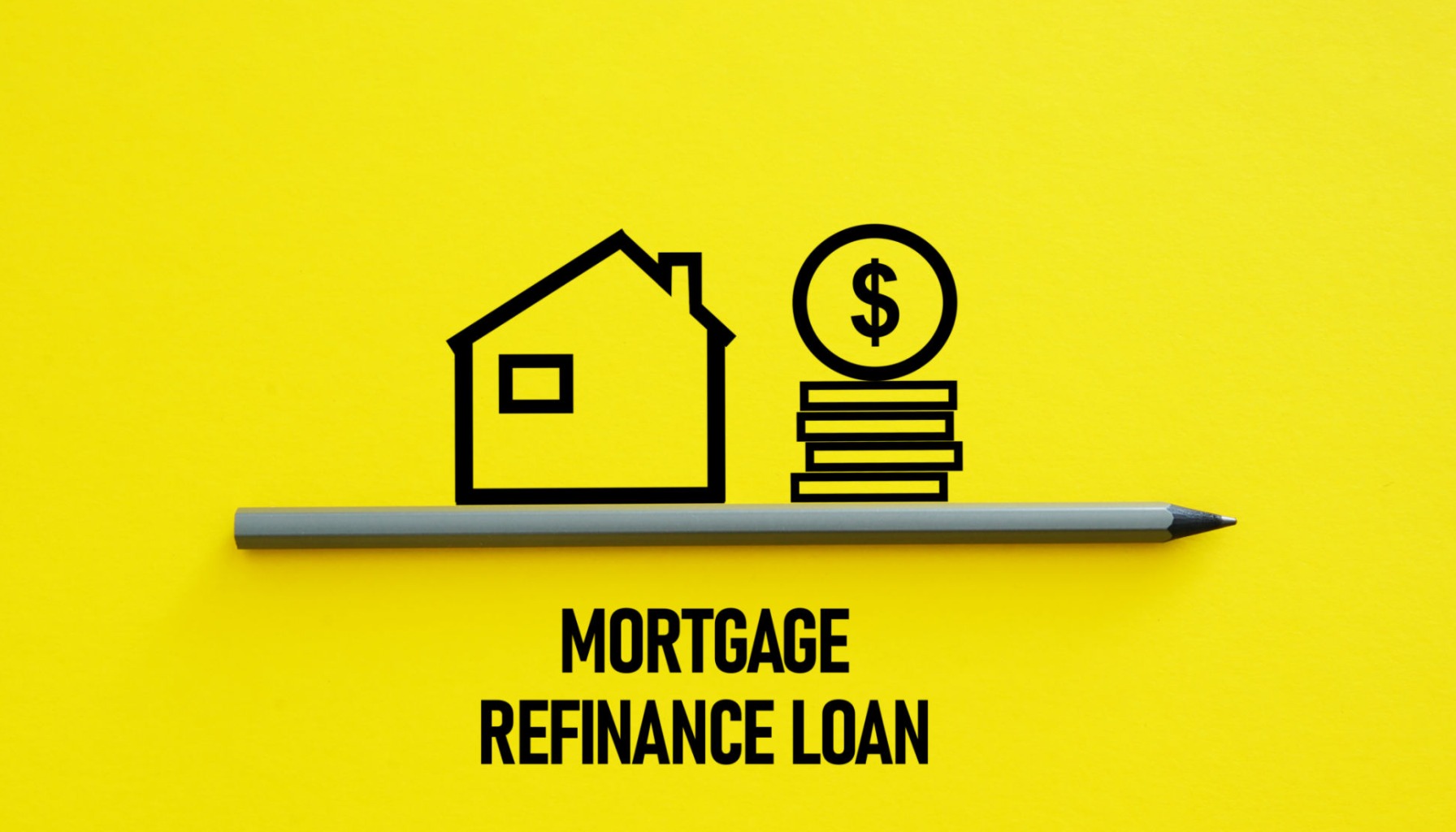Looking to refinance your home? As of today, September 27, 2025, the national average for Mortgage Rates Today: 30-Year Fixed Refinance Rate Rises by 36 Basis Points. According to Zillow, the rate has climbed to 7.12%. This increase of 36 basis points compared to last week's average of 6.76% could influence your decision to refinance. Let's delve deeper into what's causing these fluctuations and how it impacts you.
Mortgage Rates Today: 30-Year Fixed Refinance Rate Rises by 36 Basis Points
Refinance Rates Snapshot (September 27, 2025)
Here's a quick overview of the refinance rates as reported by Zillow:
- 30-Year Fixed Refinance Rate: 7.12% (Up 9 basis points from 7.03% on Saturday)
- 15-Year Fixed Refinance Rate: 6.01% (Up 4 basis points from 5.97%)
- 5-Year ARM Refinance Rate: 7.41% (Down 1 basis point from 7.42%)
These numbers paint a clear picture: while short-term adjustable rates have seen a slight dip, the more popular 30-year and 15-year fixed rates are trending upwards.
What’s Driving the Spike in Refinance Rates?
Several factors are contributing to this uptick. First and foremost, we need to look at what the Federal Reserve is doing, but also external market conditions.
As an expert who's kept a close eye on the market for years, I can tell you that these fluctuations are normal as we keep managing inflation and overall economic expansion.
The Federal Reserve’s Role in Mortgage Rates: Post-Cut Analysis & Outlook
Let's break down how the recent Federal Reserve actions are influencing mortgage rates and what it means for the housing market, as the Mortgage Rates Today: 30-Year Fixed Refinance Rate Rises by 36 Basis Points.
The Decision: First Cut of 2025
On September 17, 2025, the Federal Reserve executed its first interest rate cut of the year, reducing its benchmark rate by 0.25%, bringing the target range to 4.0%-4.25%. This decision followed a pause after several cuts in late 2024.
Economic Context: Stubborn Inflation vs. Solid Growth
This decision comes at a time where we're experiencing mixed economic signals.
- Inflation: The core PCE price index (Fed's preferred gauge) increased 2.9% year-over-year in August, surpassing the Fed's 2% target.
- Economic Growth: Real GDP increased at an annualized rate of 3.8% in the second quarter of 2025.
These conflicting indicators put the Fed in a tricky position, trying to control inflation without hindering economic growth.
The Critical Link: Treasury Yields and Mortgage Rates
The Fed rate cut impacts mortgage rates through the 10-year U.S. Treasury yield, the benchmark for 30-year fixed-rate mortgages.
- 10-Year Treasury Yield: 4.176% (as of September 26, 2025).
How This Relationship Works:
- Direct Benchmark: Lenders reference the 10-year yield to price 30-year mortgages.
- Investor Competition: Mortgage-backed securities must offer competitive returns compared to Treasury bonds to attract investors.
- The “Spread”: Mortgage rates are usually 1 to 2 percentage points higher than the 10-year yield due to additional risk. However, lately, this spread has widened to over 2 percentage points
What This Means for Mortgage Rates Now
The wide spread between the Treasury yields and mortgage rates has a moderating effect on how much mortgage rates fall, meaning mortgage rates may not fall as sharply as the Treasury yield does.
Impact on Homeowners: Should You Still Refinance?
With the Mortgage Rates Today: 30-Year Fixed Refinance Rate Rises by 36 Basis Points, many homeowners are understandably questioning whether refinancing still makes sense. Here's my take:
- Run the Numbers: Calculate your break-even point. How long will it take for the savings from a lower interest rate to offset the refinancing costs? Consider your long-term financial goals.
- Consider Your Risk Tolerance: Are you comfortable with the uncertainty of the market? If you anticipate rates climbing even higher, refinancing now might be a good move to lock in a rate, even if it's not the absolute lowest.
Outlook for the Housing Market
So, what does all of this mean for the broader housing market?
- For Buyers: Even modestly lower mortgage rates enhance affordability. However, the wide spread means the benefits are not as substantial as they could be, and competition in markets with limited supply remains high.
- For Sellers & Inventory: The decline in rates may encourage some “rate-locked” homeowners to list their properties, potentially boosting inventory. However, if new buyer demand outpaces new listings, upward pressure on home prices is likely to continue.
Recommended Read:
30-Year Fixed Refinance Rate Trends – September 26, 2025
What’s Next? Key Factors to Watch
Navigating the mortgage landscape requires staying informed. Here's what I'll be watching closely in the coming weeks:
- Inflation Reports: The next PCE and CPI readings will be essential in confirming inflation's downward trajectory.
- Labor Market Data: A continued softening in job growth could push the Fed to consider further rate cuts.
- The Spread: Monitoring the normalization of the spread between Treasury yields and mortgage rates will be crucial in predicting potential relief for borrowers.
Why This Matters for You
The fluctuations in mortgage rates have different implications depending on your situation:
- Current Buyers: This environment is more favorable than it was six months ago. Focus on securing the best possible rate, and keep an eye on that spread – it significantly impacts the rates offered.
- Refinancers: Homeowners with rates above 6.5% should explore refinancing options as conditions have improved. However, you should carefully consider the costs versus the savings, and future plans.
- Market Watchers: Remember that the journey toward lower rates will be cautious. The wide spread indicates that lenders and investors are still pricing in risk, suggesting mortgage rates will stay elevated relative to Treasury yields for quite some time.
Ultimately, making informed decisions about your mortgage or refinance depends on carefully analyzing your situation, understanding market trends, and considering expert advice. Stay informed, be proactive, and navigate this dynamic market with confidence!
Maximize Your Mortgage Decisions
Thinking about whether to refinance now? Timing is critical, and having the right strategy can save you thousands over the life of your loan.
Norada's team can guide you through current market dynamics and help you position your investments wisely—whether you're looking to reduce rates, pull out equity, or expand your portfolio.
HOT NEW LISTINGS JUST ADDED!
Talk to a Norada investment counselor today (No Obligation):
(800) 611-3060
Recommended Read:
- When You Refinance a Mortgage Do the 30 Years Start Over?
- Should You Refinance as Mortgage Rates Reach Lowest Level in Over a Year?
- NAR Predicts 6% Mortgage Rates in 2025 Will Boost Housing Market
- Mortgage Rates Predictions for 2025: Expert Forecast
- Half of Recent Home Buyers Got Mortgage Rates Below 5%
- Mortgage Rates Need to Drop by 2% Before Buying Spree Begins
- Will Mortgage Rates Ever Be 3% Again: Future Outlook
- Mortgage Rates Predictions for Next 2 Years
- Mortgage Rate Predictions for Next 5 Years
- Mortgage Rate Predictions for 2025: Expert Forecast



